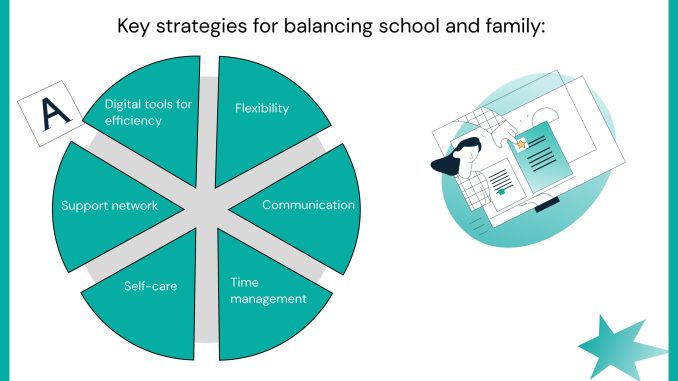
Balancing school and life responsibilities is a challenge many students face, especially in today’s fast-paced world where demands seem to multiply relentlessly. Juggling academics alongside personal, social, and sometimes professional obligations can feel overwhelming, leaving students stretched thin and struggling to maintain focus or well-being. Yet, mastering this delicate balance is crucial—not only for academic success but also for overall life satisfaction and long-term growth. Understanding how to navigate these competing demands with intentionality and resilience is a skill that pays dividends well beyond the classroom.
At its core, balancing school and life responsibilities is about managing time and energy effectively. It’s easy to underestimate how much mental bandwidth academic work requires, especially when paired with family duties, part-time jobs, social commitments, or even self-care. For example, a student who is also a caregiver or working several shifts a week faces a distinct set of challenges compared to someone whose sole focus is coursework. Recognizing these unique circumstances is the first step in developing a sustainable approach. The goal is not to achieve perfect equilibrium every day but to create rhythms that allow both academic and personal life to thrive over time.
One of the most powerful tools in this balancing act is prioritization. This doesn’t mean simply working harder but working smarter by understanding what demands immediate attention and what can wait. Often, students feel pressured to tackle everything simultaneously, which can lead to burnout or subpar results. Instead, breaking down tasks by urgency and importance helps create clarity. For instance, preparing for an upcoming exam might take precedence over attending a social event, while routine household chores might be scheduled around study sessions. This fluid prioritization acknowledges that some responsibilities ebb and flow in intensity and that flexibility is essential.
Equally important is cultivating a realistic and organized schedule. Writing down deadlines, appointments, and commitments provides a visual map that reduces the mental load of trying to remember everything. When students allocate specific blocks of time to studying, working, or personal activities, it fosters discipline and minimizes procrastination. Imagine a college student who blocks morning hours for classes and study, reserves early evenings for work shifts, and dedicates weekends to family or relaxation. Such a plan creates predictability and reduces the chaos that often accompanies juggling multiple roles. Of course, unexpected events will arise, and the key is building in buffer time to adapt without feeling overwhelmed.
Communication also plays a critical role in balancing school and life responsibilities. Students who openly communicate their commitments and challenges with family members, employers, and educators often find more support and understanding. For example, discussing a heavy academic load with a supervisor might lead to more flexible work hours, or informing professors about personal circumstances could open doors for extensions or accommodations. Being transparent about what you’re juggling doesn’t indicate weakness; rather, it fosters collaboration and realistic expectations, which can ease stress and foster a more manageable workload.
Another essential consideration is recognizing the importance of self-care. It’s tempting to sacrifice sleep, nutrition, or downtime in pursuit of academic achievement, but neglecting these foundational needs ultimately undermines performance and well-being. A student who pushes through exhaustion or chronic stress may meet deadlines but risks burnout, illness, or diminished cognitive function. Integrating regular physical activity, maintaining social connections, and carving out moments of rest aren’t luxuries—they’re necessities that fuel motivation and resilience. For instance, taking a short walk between study sessions or scheduling regular video calls with friends can replenish energy and keep perspective grounded.
Technology can be both a help and a hindrance in balancing responsibilities. On the positive side, productivity apps, digital calendars, and online collaboration tools can streamline task management and communication. Yet, it’s easy to fall into the trap of distractions from social media or endless notifications, which can sap focus and time. Being intentional about technology use—setting boundaries around screen time or designating “focus hours”—helps ensure digital tools serve your goals rather than detract from them. Many students find success in techniques such as the Pomodoro method, where focused bursts of work are interspersed with breaks, leveraging technology mindfully to enhance productivity.
Importantly, learning to say no is a crucial skill in this balancing process. Students often feel compelled to accept every opportunity, from extracurricular activities to social invitations, driven by a fear of missing out or a desire to please others. While involvement can enrich the college experience, overcommitment can jeopardize academic progress and personal health. Being selective about which responsibilities to take on—and sometimes declining politely—allows for a more focused and fulfilling approach to both school and life.
Lastly, it’s vital to maintain perspective and remember that balance is not a static state but a dynamic process. There will be times when school demands surge, such as during finals or major projects, and other moments when personal life requires more attention. Rather than striving for perfect symmetry every day, successful students accept this ebb and flow and adjust accordingly. They recognize that asking for help, reassessing priorities, and recalibrating schedules are signs of strength and adaptability, not failure.
In conclusion, balancing school and life responsibilities requires a thoughtful combination of prioritization, organization, communication, self-care, and flexibility. It is less about rigid perfection and more about creating sustainable rhythms that support both academic success and personal fulfillment. By adopting a strategic yet compassionate approach, students can navigate the complexities of their many roles with confidence and resilience, setting the stage not only for immediate achievement but also for lifelong growth and well-being.